Blogs
 What’s in a Name? (12/31/2021) - We recently did some minor remodeling on our house, and were in need of an electrician. Out and about one day, I saw a work van with a lightning bolt on the side—Stoner Electric. Now, I’m not sure how much business this poor guy has lost because of the name, but I’m guessing […]
What’s in a Name? (12/31/2021) - We recently did some minor remodeling on our house, and were in need of an electrician. Out and about one day, I saw a work van with a lightning bolt on the side—Stoner Electric. Now, I’m not sure how much business this poor guy has lost because of the name, but I’m guessing […]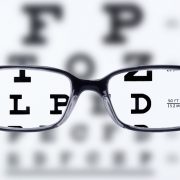 Coming Into Focus (11/30/2021) - Another year, another trip to the optometrist. This familiar ritual consists of various tests and devices designed to periodically reassess my vision enhancement needs. Foremost among these are a series of ‘which is better, A or B’ questions. Choice is Key to Establishing Preference In this assessment, I look through a progression of adjustable lenses […]
Coming Into Focus (11/30/2021) - Another year, another trip to the optometrist. This familiar ritual consists of various tests and devices designed to periodically reassess my vision enhancement needs. Foremost among these are a series of ‘which is better, A or B’ questions. Choice is Key to Establishing Preference In this assessment, I look through a progression of adjustable lenses […]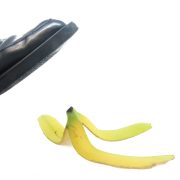 Oblivious (10/30/2021) - I was driving home from work a couple weeks ago, taking the backroads and avoiding the freeway. Taking 5 minutes longer than the road more traveled, my back route is rural, or at times foresty. It winds through scattered homes nestled among the evergreen forest or lining the shorelines of placid lakes, then coasts […]
Oblivious (10/30/2021) - I was driving home from work a couple weeks ago, taking the backroads and avoiding the freeway. Taking 5 minutes longer than the road more traveled, my back route is rural, or at times foresty. It winds through scattered homes nestled among the evergreen forest or lining the shorelines of placid lakes, then coasts […]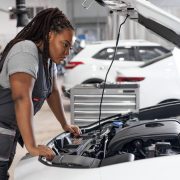 Parts Department (8/28/2021) - My wife’s car fell sick recently, coughing and sputtering while ‘powering’ up hills. My son-in-law, an amateur mechanic, diagnosed the problem as a bad coil pack. Replacing the suspect parts, however, yielded scant reward. Pinging and sputtering and loss of power persisted. Bowing to the inevitable, we finally took her car to a professional mechanic. […]
Parts Department (8/28/2021) - My wife’s car fell sick recently, coughing and sputtering while ‘powering’ up hills. My son-in-law, an amateur mechanic, diagnosed the problem as a bad coil pack. Replacing the suspect parts, however, yielded scant reward. Pinging and sputtering and loss of power persisted. Bowing to the inevitable, we finally took her car to a professional mechanic. […]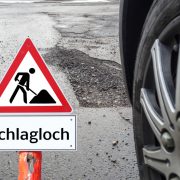 Avoiding Potholes (7/19/2021) - I was driving the arterial into my neighborhood the other day, tooling along at a pretty good clip. Suddenly, I hit a bone jarring pothole. I knew it was there, as I had seen and avoided it before, but this time I hit it dead center. It didn’t feel good, and I didn’t want […]
Avoiding Potholes (7/19/2021) - I was driving the arterial into my neighborhood the other day, tooling along at a pretty good clip. Suddenly, I hit a bone jarring pothole. I knew it was there, as I had seen and avoided it before, but this time I hit it dead center. It didn’t feel good, and I didn’t want […]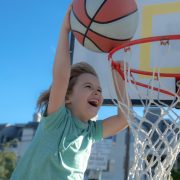 Friends & ‘Enemies’ (6/24/2021) - Basketball Analogy It’s NBA basketball playoff time, and (when it’s not a foul-fest) I enjoy watching the most graceful athletes in the world do their thing. One of the most spectacular plays in basketball is the alley-oop dunk, where one player passes the ball up near the rim while the other player jumps, catches […]
Friends & ‘Enemies’ (6/24/2021) - Basketball Analogy It’s NBA basketball playoff time, and (when it’s not a foul-fest) I enjoy watching the most graceful athletes in the world do their thing. One of the most spectacular plays in basketball is the alley-oop dunk, where one player passes the ball up near the rim while the other player jumps, catches […]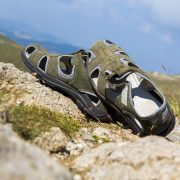 Attention & Control (5/28/2021) - Interpreting the Reviews Preparing for a backpacking trip into Canyonlands National Park last year, I started looking into getting a new pair of sandals. My beloved Chacos had finally completely fallen apart, and I wanted a style of sandal with a closed toe box for river crossings. Doing research and reading the reviews for a […]
Attention & Control (5/28/2021) - Interpreting the Reviews Preparing for a backpacking trip into Canyonlands National Park last year, I started looking into getting a new pair of sandals. My beloved Chacos had finally completely fallen apart, and I wanted a style of sandal with a closed toe box for river crossings. Doing research and reading the reviews for a […] Defending Subjectivity (2/17/2021) - Where to Look? We should include subjective criteria in a PT musculoskeletal evaluation, and movement quality can be assessed as ‘good’ or ‘bad’. What do you think of these statements? Are they self-evident? Or do they seem vaguely heretical? We can sometimes misinterpret calls for evidence based practice as meaning that every item […]
Defending Subjectivity (2/17/2021) - Where to Look? We should include subjective criteria in a PT musculoskeletal evaluation, and movement quality can be assessed as ‘good’ or ‘bad’. What do you think of these statements? Are they self-evident? Or do they seem vaguely heretical? We can sometimes misinterpret calls for evidence based practice as meaning that every item […]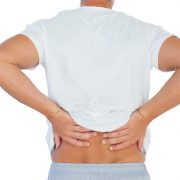 Lumbar Stabilization—Expanded View (1/27/2021) - Previous Topic In our March and April 2020 blogs, we suggested principles of Optimal Movement that we could be teaching our patients: Fascio-Skeletal Weight Bearing Appropriate Distribution of Movement Proportional Use of Synergists Minimization of Unnecessary Effort Application to Low Back Pain Let’s now get more specific by talking about the 800 pound […]
Lumbar Stabilization—Expanded View (1/27/2021) - Previous Topic In our March and April 2020 blogs, we suggested principles of Optimal Movement that we could be teaching our patients: Fascio-Skeletal Weight Bearing Appropriate Distribution of Movement Proportional Use of Synergists Minimization of Unnecessary Effort Application to Low Back Pain Let’s now get more specific by talking about the 800 pound […]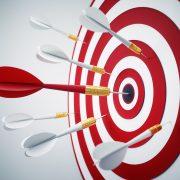 Phases of Motor Learning II (12/9/2020) - In this month’s blog, we will continue to address motor control exercise and the last two phases of motor learning—the associative phase and the autonomous stage. The first phase, the cognitive phase, was addressed in last month’s blog. This was described as the ‘ground floor’ stage of rehab-related postural or movement optimization. This phase is […]
Phases of Motor Learning II (12/9/2020) - In this month’s blog, we will continue to address motor control exercise and the last two phases of motor learning—the associative phase and the autonomous stage. The first phase, the cognitive phase, was addressed in last month’s blog. This was described as the ‘ground floor’ stage of rehab-related postural or movement optimization. This phase is […]
Article Reviews
 A Regional Interdependence Model of Musculoskeletal Dysfunction (6/5/2020) - Premise This article is a statement of clinical reasoning related to regional interdependence, rather than a true ‘study’. It is perhaps the flagship article for a rehab idea or principle. Bodies are integrated, connected and dependent upon each other—manifesting not just locally, but regionally and globally as well. The authors do a nice job of […]
A Regional Interdependence Model of Musculoskeletal Dysfunction (6/5/2020) - Premise This article is a statement of clinical reasoning related to regional interdependence, rather than a true ‘study’. It is perhaps the flagship article for a rehab idea or principle. Bodies are integrated, connected and dependent upon each other—manifesting not just locally, but regionally and globally as well. The authors do a nice job of […]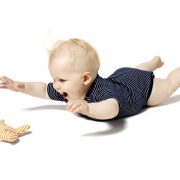 Prone Leg Extension Test Viability (3/27/2020) - Muscle recruitment patterns during the prone leg extension. Gregory J Lehman,1 Duane Lennon,2 Brian Tresidder,2 Ben Rayfield,2 and Michael Poschar2. BMC Musculoskelet Disord. 2004; 5: 3. Setting the Table This 2004 article is a good example of a traditionally held rehab thought process that conflates muscle recruitment patterns in one position with muscle recruitment patterns in an entirely different position […]
Prone Leg Extension Test Viability (3/27/2020) - Muscle recruitment patterns during the prone leg extension. Gregory J Lehman,1 Duane Lennon,2 Brian Tresidder,2 Ben Rayfield,2 and Michael Poschar2. BMC Musculoskelet Disord. 2004; 5: 3. Setting the Table This 2004 article is a good example of a traditionally held rehab thought process that conflates muscle recruitment patterns in one position with muscle recruitment patterns in an entirely different position […]